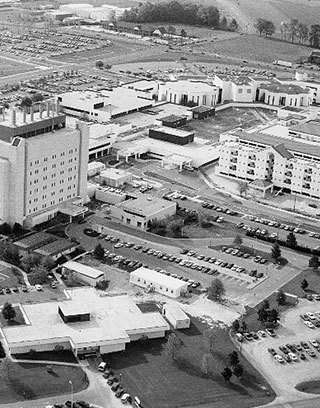
- Other names
- Vivarium
- Built
- 1978
- Construction cost
- $1.6 million
- Gross sq. ft.
- 15,090
- Assignable sq. ft.
- 7,542
- Namesake
- In October 1999, the Life Sciences Building was dedicated to Edward Nelson Warren. Mr. Warren was a North Carolina Senator who showed great support for the additions to the building. The following article appeared in the Volume 8, No. 1, June/July 1999 issue UHS People.
New Facility to Honor State Senator
The new life sciences building at the East Carolina University School of Medicine will be named in honor of a Greenville State Senator.
The ECU board of trustees voted unanimously during its May meeting to name the new building after Sen. Ed Warren, a Democrat from Greenville.
“Mr. Warren has been a wonderful friend to ECU,” said Chancellor Richard Eakin. “He has worked diligently on behalf of the institution.”
Warren has been devoted to improving cardiac health. Research conducted inside the new life sciences building will focus on heart research. hat makes its new name “a wonderful tribute” to the senator, Eakin said.
Warren said he was “humbled” by the honor.
“I think it’s a great honor for the life sciences building to be named for me,” the state senator said. “I’m especially pleased because I understand the building’s primary purpose will be research and heart research. I chair the North Carolina Heart Disease and Stroke Prevention Task Force, and this is one of my primary interests. ECU projects have always been among my top priorities in my political career in the General Assembly.”
The official name of the $14 million facility will be the Edward Nelson Warren Life Sciences Building. At 60,000 square feet, the building will house the radiation biology and comparative medicine departments.
According to university officials, the building should be completed and ready for occupation later this month.
- History
- The $2.5 million Life Sciences Building and Utility Pant, the first two buildings to be completed at the medical school’s health science campus, opened in January 1980.
The 15,090 square foot Life Sciences Building, which took 15 months to complete, contains 13 animal rooms, an operating suite, an infectious and isotope isolation area and three faculty project labs for extended research. - Additions
- 1989 – 47,000 square feet addition for research labs and support facilities-$12.3 million
1996 – groundbreaking for a 68,000 square feet addition for heart and cancer research